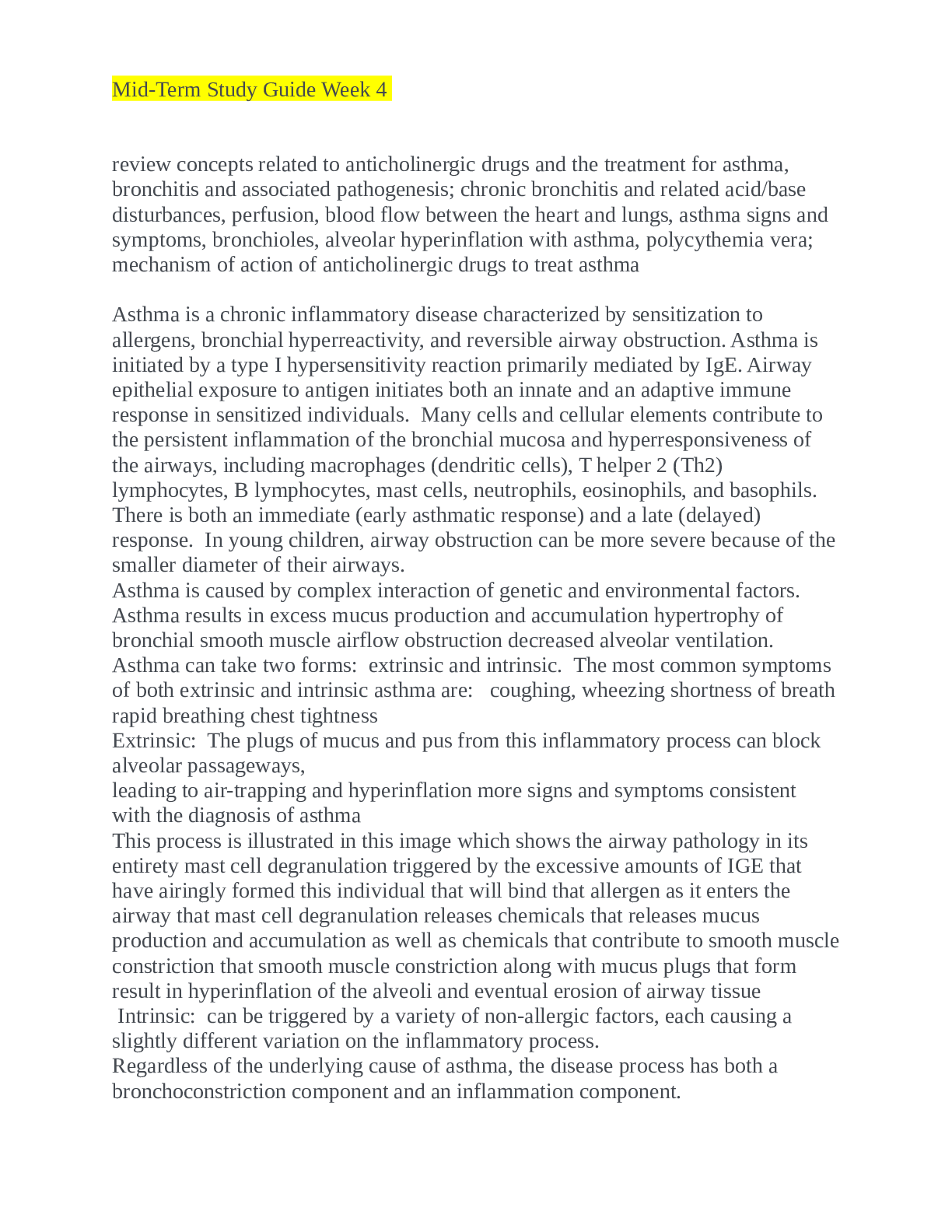review concepts related to anticholinergic drugs and the treatment for asthma,
bronchitis and associated pathogenesis; chronic bronchitis and related acid/base
disturbances, perfusion, blood flow between the heart and lungs, asthma signs and
symptoms, bronchioles, alveolar hyperinflation with asthma, polycythemia vera;
mechanism of action of anticholinergic drugs to treat asthma
Asthma is a chronic inflammatory disease characterized by sensitization to
allergens, bronchial hyperreactivity, and reversible airway obstruction. Asthma is
initiated by a type I hypersensitivity reaction primarily mediated by IgE. Airway
epithelial exposure to antigen initiates both an innate and an adaptive immune
response in sensitized individuals. Many cells and cellular elements contribute to
the persistent inflammation of the bronchial mucosa and hyperresponsiveness of
the airways, including macrophages (dendritic cells), T helper 2 (Th2)
lymphocytes, B lymphocytes, mast cells, neutrophils, eosinophils, and basophils.
There is both an immediate (early asthmatic response) and a late (delayed)
response. In young children, airway obstruction can be more severe because of the
smaller diameter of their airways.
Asthma is caused by complex interaction of genetic and environmental factors.
Asthma results in excess mucus production and accumulation hypertrophy of
bronchial smooth muscle airflow obstruction decreased alveolar ventilation.
Asthma can take two forms: extrinsic and intrinsic. The most common symptoms
of both extrinsic and intrinsic asthma are: coughing, wheezing shortness of breath
rapid breathing chest tightness
Extrinsic: The plugs of mucus and pus from this inflammatory process can block
alveolar passageways,
leading to air-trapping and hyperinflation more signs and symptoms consistent
with the diagnosis of asthma
This process is illustrated in this image which shows the airway pathology in its
entirety mast cell degranulation triggered by the excessive amounts of IGE that
have airingly formed this individual that will bind that allergen as it enters the
airway that mast cell degranulation releases chemicals that releases mucus
production and accumulation as well as chemicals that contribute to smooth muscle
constriction that smooth muscle constriction along with mucus plugs that form
result in hyperinflation of the alveoli and eventual erosion of airway tissue
Intrinsic: can be triggered by a variety of non-allergic factors, each causing a
slightly different variation on the inflammatory process.
Regardless of the underlying cause of asthma, the disease process has both a
bronchoconstriction component and an inflammation component.
Read More


